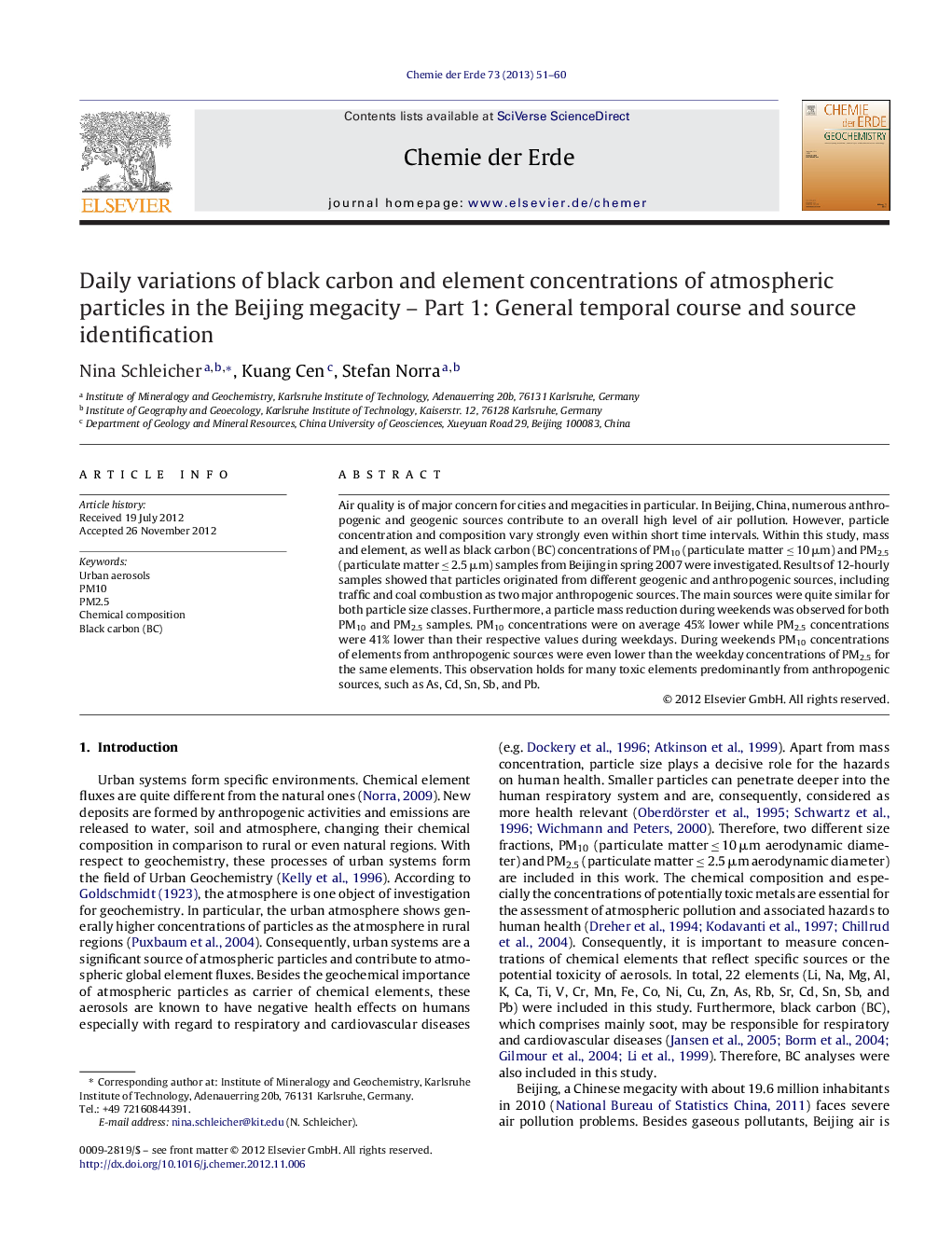| Article ID | Journal | Published Year | Pages | File Type |
|---|---|---|---|---|
| 4406824 | Chemie der Erde - Geochemistry | 2013 | 10 Pages |
Air quality is of major concern for cities and megacities in particular. In Beijing, China, numerous anthropogenic and geogenic sources contribute to an overall high level of air pollution. However, particle concentration and composition vary strongly even within short time intervals. Within this study, mass and element, as well as black carbon (BC) concentrations of PM10 (particulate matter ≤ 10 μm) and PM2.5 (particulate matter ≤ 2.5 μm) samples from Beijing in spring 2007 were investigated. Results of 12-hourly samples showed that particles originated from different geogenic and anthropogenic sources, including traffic and coal combustion as two major anthropogenic sources. The main sources were quite similar for both particle size classes. Furthermore, a particle mass reduction during weekends was observed for both PM10 and PM2.5 samples. PM10 concentrations were on average 45% lower while PM2.5 concentrations were 41% lower than their respective values during weekdays. During weekends PM10 concentrations of elements from anthropogenic sources were even lower than the weekday concentrations of PM2.5 for the same elements. This observation holds for many toxic elements predominantly from anthropogenic sources, such as As, Cd, Sn, Sb, and Pb.
